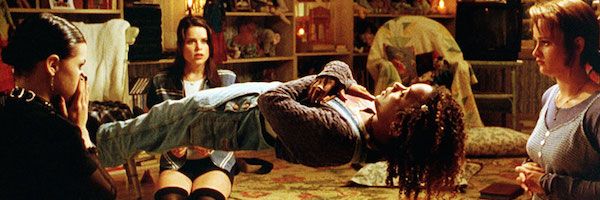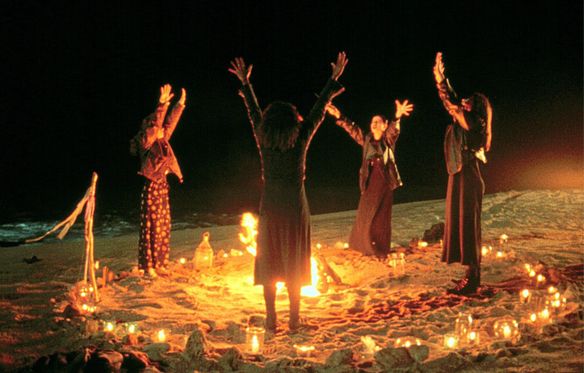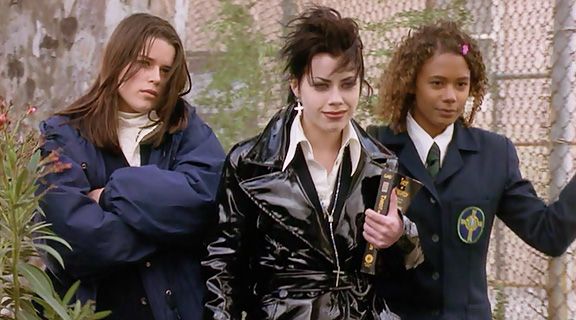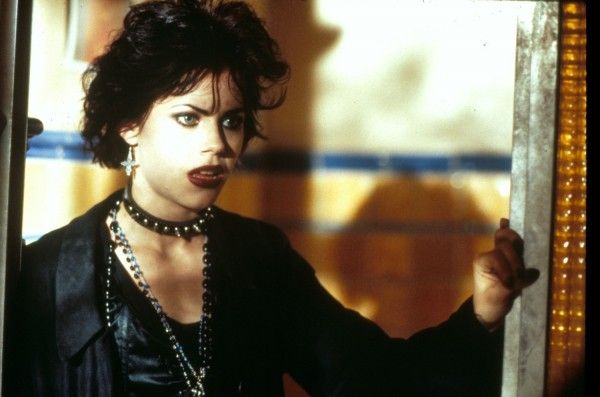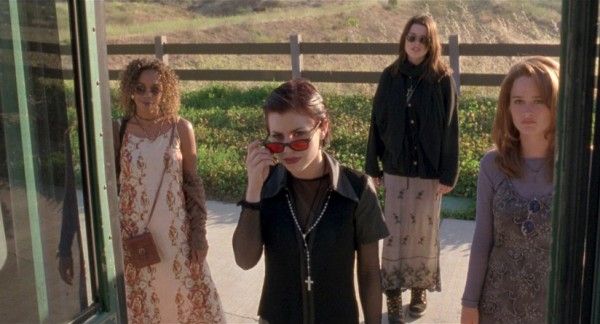Of the many things to admire about The Craft, one of the most immediately recognizable elements is its soundtrack. When I first saw the film, I walked straight out of the theater and right over to the local big-chain media store in the mall and bought the soundtrack. Most of the songs remain catchy and worth revisiting regularly, but I had a particular affinity for Matthew Sweet’s “Dark Secret” and Letters to Cleo’s “Dangerous Type,” and “Under the Water” remains one of the only Jewel songs that doesn’t put me in the mood for a deep nap. There is, however, two moments that, both in the movie and on the soundtrack, cause an epic cringe, and both of them are covers. Our Lady Peace’s grungy take on The Beatles’ “Tomorrow Never Knows” opens the film on a sour note, but Love Spit Love’s atrocious reimagining of The Smiths’ classic “How Soon is Now?” should very simply be illegal. In both cases, songs that were originally jangly yet graceful, rebellious yet steeped in pop sensibilities, philosophical yet unpretentious were given undue amplification and heaviness, a slight boost in “power” that drowned out the unique textures and complexity that denoted the original songs.
I bring this up because the issues with these songs reflect, oddly, the problems that the central quartet of characters in The Craft face at each turn of the supernaturally inflected plot. The central protagonist of the movie, Robin Tunney’s Sarah, arrives at a West Coast Catholic school as the film begins, and is quickly adopted by the school’s trio of “freak” girls, Nancy, Bonnie, and Rochelle, played by Fairuza Balk, Neve Campbell, and Rachel True, respectively. All three practice witchcraft and believe in some vague kind of spirituality, ruled over by a force known as Manon, but Sarah is naturally attuned to that world and its powers, catching Bonnie’s attention by twirling a vertical pencil without the aid of her hands. As the film spells out, Bonnie, Rochelle, and especially Nancy are capable of harnessing the powers of Manon but Sarah is naturally gifted, thanks to her late mother, who died while giving birth to her.
And yet, Sarah has no real control over her powers when we meet her. At one point, she describes attempting to make it rain outside and having a water pipe burst in her room, or trying to invoke total silence and going deaf for a few days. If one were to boil down the plot of the movie, the thrust of the narrative is in Sarah becoming a confident, independent, and crucially measured woman with elemental powers, the control and attitude of which she gets from her friendship with these three women. For all of Bonnie’s self-esteem issues with the scars that cover her back, or Nancy’s frustration over her living situation with a doormat mom and a pervy stepdad, they’re not what you would call pushovers. When Rochelle is bullied during swimming team practice, she confronts the blonde-haired Aryan (Christine Taylor of The Brady Bunch Movie) who quickly, beguilingly cops to being a racist.
As a director, Andrew Fleming doesn’t do much beyond competent filmmaking. He clearly has a far more noticeable talent as a screenwriter, as he penned this as well as his follow-up, the uproarious Dick, which was another sort of female empowerment tale. The Craft, of course, is not a film of tremendous complexity, or of challenging thematic concerns that confront grave societal or historical matters. But in the pantheon of 1990s teen dramedies, The Craft fits a particular niche of being made distinctly for young, independently minded women, and the story offers a feminine-centric perspective that largely belittles the idea of young women being obsessed with boys and how they look.
Indeed, when the four lead characters get together to call to the four corners – essentially ask a favor of Manon - Sarah foolishly asks for the attentions of Chris (Skeet Ulrich), a grade-A sleazebag who labeled her a slut for not sleeping with him on their first date. Her call to Manon causes Chris to be inflicted with a kind of obsession, one that immediately tells Sarah that she isn’t interested in him at all but also leads to him attempting to rape her. This leads to Nancy, who has been gifted all the powers of Manon, quite literally turning into Sarah to seduce and kill Chris, and the film conflates her wanting for revenge for her friend with her own wanting for vindication for Chris similarly having sex with her and labeling her.
Of course, there's also a sense in the film that Nancy actually wants Chris back as well, and this is where the film's view of femininity becomes a bit troubling. Before Sarah interrupts her plan, Nancy seems to be enjoying making out with Chris, in anticipation of sex, and one has to wonder that if Sarah hadn't shown up, if Nancy would have continued with Chris or go through with the killing as planned. And the fact that Sarah later tells her father that she believes Chris was a good person underneath it all is pure misandry, and undercuts the defiance of both Sarah and the other characters that is celebrated in nearly every other frame of the film. In most of the film, Fleming makes men foolish, dangerous, and above all manipulative, but he also doesn’t shy away from the ways their attention can hurt, complicate, and embitter young women. It's what makes these missteps so obvious and laughable, including the fact that Bonnie’s open embrace of her body and sexuality after her scars are miraculously healed also leads to her losing her sensitivity and intelligence in favor of wide scale cat-calling.
All four of the young women are given what they ask for, including Rochelle’s wish to see Taylor’s character go bald, but what they wished for (surprise) turns out to be not exactly what they wanted. Sarah realizes this for herself through what happens with Chris, and Rochelle does eventually feel guilty about what happened to Taylor’s character, but both Bonnie and Nancy must be taught to feel bad by Sarah, who the other three wage war on when she starts feeling guilty. This leads to a pretty thrilling witchcraft battle royale at the climax, but it betrays the better things that the film accomplishes along the way. Sarah is ultimately held up as the ideal, one who must punish and teach the other women how to act, rather then them figuring out the error of their ways in their own unique ways and having the film being about self-realization rather than locating the right role model.
The film has the right idea overall, but there’s a lack of insight into more intimate matters of feminine sexuality and intimate personality that a female writer and/or director might have been able to provide. In this sense, the talk of a remake is actually more than just and genuinely promising; the project could prove an ideal platform for someone like Karyn Kusama or Amy Seimetz. It’s an interesting text that Fleming makes more than a few fascinating observations and expresses a handful of ideas through, and what he muddles or falters in could invite an intriguing new perspective or opinion in another artist’s hands.
At one point, the owner of a local holistic, spirituality, and witchcraft store tells the young women that both light and dark magic are crucial to life, that happiness and cruelty are equally important to the building of character. That’s the film’s message in a nutshell, and though Fleming does introduce both the empathetic and darker sides of his characters, he doesn’t push either far enough. There’s a wildly expressive melodrama at the heart of The Craft, loaded with levels of emotional nuances and personal details, but what’s been conjured here relies too much on easy good vs. evil character development and plot structure. The spell, in this case, must be said a different way for the magic to happen.

